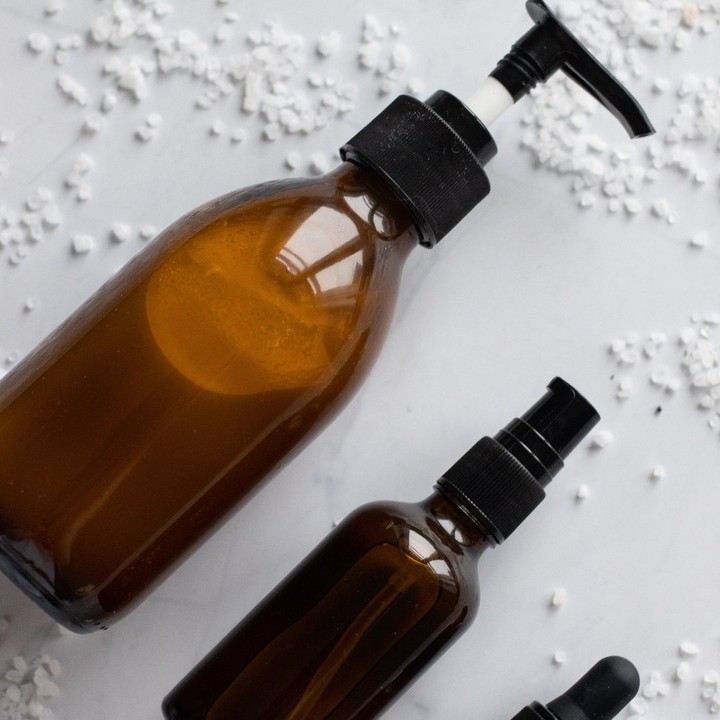
Steps for Using Tanning Oil: Specific Periods for Each Skin Type
Steps for Using Tanning Oil: Specific Periods for Each Skin Type
Achieving a sun-kissed glow with tanning oil requires patience, care, and understanding of one's skin type. Proper application and exposure timing are crucial for safe and effective tanning. Here's a comprehensive article on the steps to use tanning oil and the specific periods recommended for different skin types:
1. Determine Your Skin Type:
Before diving into the tanning process, identify your skin type. This knowledge will guide the choice of tanning oil and determine the ideal tanning duration to avoid burns or skin damage.
2. Pre-tanning Preparation:
a. Exfoliate: A week before tanning, exfoliate your skin to remove dead cells. This ensures an even tan and helps the oil penetrate better. Use a gentle scrub suitable for your skin type. b. Hydrate: Moisturize your skin regularly in the days leading up to tanning. Well-moisturized skin tans more evenly and retains the tan longer.
3. Choosing the Right Tanning Oil:
Based on your skin type, select an appropriate tanning oil. For instance:
- Oily Skin: Oil-free or non-comedogenic oils.
- Dry Skin: Moisturizing oils like coconut or argan oil.
- Sensitive Skin: Hypoallergenic and fragrance-free options.
- Fair Skin: Gradual tanning oils or those with added SPF.
4. Application Process:
a. Patch Test: Before full application, conduct a patch test to check for any adverse reactions. b. Start Small: Apply a small amount initially to gauge how your skin reacts. c. Uniform Application: Use circular motions to evenly distribute the oil. Ensure no areas are overly saturated. d. Avoid Sensitive Areas: Steer clear of the eyes, lips, and any irritated or broken skin.
5. Tanning Duration by Skin Type:
The time you should spend in the sun with tanning oil varies based on your skin type:
- Oily Skin: Start with 15-20 minutes during non-peak hours (before 10 am and after 4 pm). Monitor skin for any signs of burning and gradually increase exposure time over sessions.
- Dry Skin: Begin with 10-15 minutes during off-peak sun hours. Dry skin can be more susceptible to burns, so it's crucial to be cautious and increase exposure slowly.
- Sensitive Skin: Limit exposure to 10 minutes initially. Monitor closely for any reactions and adjust timing accordingly. Consider using tanning oils designed specifically for sensitive skin.
- Combination Skin: Follow the guidelines for the more sensitive areas of your face and body. Adjust timing based on the predominant skin type of the area you're tanning.
- Acne-prone Skin: Limit exposure to 10-15 minutes, ensuring you don't exacerbate breakouts. Consider spot tanning or using protective clothing to cover acne-prone areas.
- Fair Skin: Extremely cautious tanning is required. Begin with just 5-10 minutes during off-peak sun hours. Gradually increase by 2-3 minutes per session, always monitoring skin reactions closely.
6. Post-tanning Care:
a. Rinse Off: After sun exposure, rinse off the tanning oil with lukewarm water and a gentle cleanser.
b. Moisturize: Hydrate your skin with a moisturizer suitable for your skin type to lock in moisture and prolong the tan.
c. Stay Hydrated: Drink plenty of water to keep your skin hydrated from within. d. Avoid Excessive Sun Exposure: Even after tanning, limit sun exposure, especially during peak hours. Continue using sunscreen when outdoors. e. Monitor Your Skin: Check for any signs of sunburn, irritation, or uneven tanning. Adjust your tanning routine accordingly in subsequent sessions.
7. Maintenance and Touch-ups:
Maintaining a tan and ensuring it looks its best requires consistent care and touch-ups. Whether you achieve your tan from sun exposure, tanning beds, or sunless tanning products, proper maintenance can extend the life of your tan and help it appear more even and radiant. Here's a guide on maintenance and touch-ups for tanning care:
1. Hydration is Key:
Internal Hydration: Drink plenty of water to keep your skin hydrated from the inside out. Proper hydration can prevent dryness and flakiness, which can make a tan appear patchy or uneven.
2. Moisturize Regularly:
Aftercare: After sun exposure or a tanning session, use a moisturizer to replenish the skin's moisture. Opt for hydrating lotions or creams that don't contain mineral oils, as they can strip the tan. You can choose Esse After Sun Aloe vera gel 200 ml
3. Gentle Cleansing:
Use mild, moisturizing body washes or shower gels to cleanse your skin. Avoid harsh soaps or exfoliating products, especially in the initial days post-tanning, as they can fade the tan more quickly.
4. Avoid Exfoliation:
Skip or reduce exfoliation sessions, as they can strip away the outermost layers of skin, taking your tan with them. If you must exfoliate, opt for gentle products and techniques.
5. Use Tan Extenders:
Consider using tan extenders or gradual tanning lotions. These products can help maintain and even enhance your tan over time by providing a light, daily dose of color. You can choose Avene Moisturizing Self Tanning Lotion 100 ml
6. Protect Your Tan:
Sun Protection: Always wear sunscreen when outdoors. While having a tan might give the illusion of protection, it doesn't offer significant protection from UV damage. Opt for a broad-spectrum sunscreen with SPF 30 or higher.
Clothing: Wear protective clothing, hats, and sunglasses to shield your skin from direct sun exposure, especially during peak sun hours.
7. Avoid Chlorine and Saltwater:
Extended exposure to chlorinated pools or saltwater can fade tans more quickly. Rinse off after swimming and moisturize to maintain your tan's longevity.
8. Touch-Up Products:
Sunless Tanners: If you've opted for sunless tanning, consider touch-up products like sprays, mousses, or lotions designed specifically for extending the life of your tan.
Bronzing Powders or Lotions: For areas that may have faded more quickly, like the face or hands, you can use bronzers to touch up and maintain a consistent color.
9. Regular Maintenance:
Plan regular tanning sessions or sunless applications to touch up your tan as it naturally fades over time. This can help maintain a consistent and desired shade.
10. Consult Professionals:
If you're unsure about the best products or techniques for maintaining your tan, consider consulting with a tanning professional or aesthetician. They can provide personalized recommendations based on your skin type and preferences.
Using tanning oil can be an effective way to achieve a sun-kissed glow, but it's essential to approach the process with caution and tailored to your skin type. By understanding your skin's needs and following the recommended steps and timings, you can enjoy a radiant tan while prioritizing skin health and safety. Always remember that sun exposure carries risks, and moderation, protection, and monitoring are key to safe tanning.
 العربية
العربية





